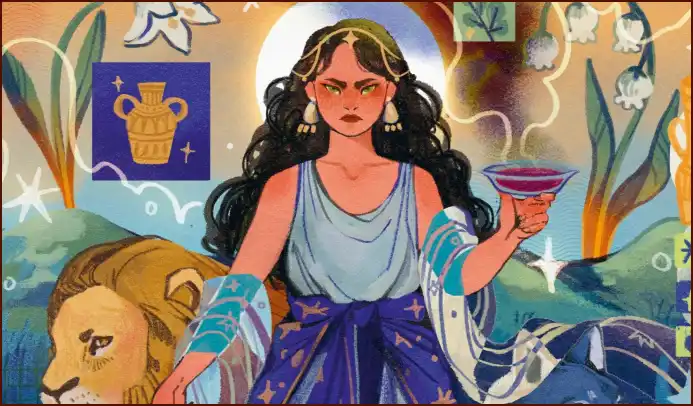A recurring figure in the folklore and trial records of the witch-hunts is the familiar, a supernatural spirit or demon believed to assist a witch in their magical practice. These spirits were thought to take the form of small animals, serving as companions, spies, and agents for the witch.
Table of Contents
The concept of the familiar was particularly prominent in the English witch trials, where the accused were often forced to confess to owning and feeding these demonic pets. While the idea of a spirit helper has ancient roots in shamanism and folklore, the early modern concept of the familiar was uniquely sinister, transforming a folk belief into evidence of a pact with the Devil.
🐾 Demonic Pets and Diabolical Pacts
According to the demonologists of the witch-hunt era, a familiar was a gift from the Devil, given to a witch upon her initiation into his service. The spirit was believed to serve the witch for a set period, carrying out her malevolent commands in exchange for her soul.
Familiars were thought to appear in various animal forms, most commonly:
- Cats: Especially black cats, which became a potent symbol of witchcraft.
- Toads and Frogs: Their association with damp, dark places made them natural candidates.
- Dogs, Rats, and Mice: Common household or farm animals whose presence could be easily interpreted as sinister.
- Insects: Even flies or spiders could be identified as familiars.
Witches were accused of feeding their familiars with their own blood, often from a special mark on their body known as the ‘witch’s teat’ or ‘Devil’s mark.’ The search for this mark became a common and brutal practice during the examination of accused witches.
🧙♀️ The Role of the Familiar
The familiar was believed to serve the witch in several key ways. It acted as a channel for her magical power, helping her to cast spells and curses against her neighbors. It could also function as a spy, gathering information or carrying out acts of mischief on the witch’s behalf. In many trial accounts, the familiar was blamed for causing mysterious illnesses in livestock, blighting crops, or even harming children.
✨ Spirit Guides in Modern Witchcraft
In contemporary witchcraft, the concept of the familiar has been reclaimed and stripped of its demonic connotations. A modern witch’s familiar is not a demon, but a beloved pet with whom the witch shares a special psychic or magical bond. They are seen as magical partners and companions who can aid in ritual and offer protection.
Many modern practitioners also work with spirit familiars or spirit guides. These are not physical animals but non-corporeal entities, such as animal spirits or nature elementals, who choose to work with a witch to offer guidance, wisdom, and magical assistance. This modern interpretation brings the concept of the familiar back to its folkloric roots as a helpful, magical companion rather than an agent of evil.
—
Atkinson, Hazel. The Extraordinary History of Witches. 2025.
More Topics
- Curses: The History of the Evil Eye and Binding Magic
- Magical Plants: A Witch’s Garden of Herbs and Poisons
- Roman Magic: Curses, the Strix, and Everyday Protection
- Circe: The Greek Sorceress of Transformation and Myth
- Greek Magic: Hecate’s Power, Oracles, and Enchantresses
- Japanese Magic: Yōkai, Onmyōdō, and Supernatural Folklore
- Empress Chen Jiao: The Royal Scandal of Witchcraft in Han China

